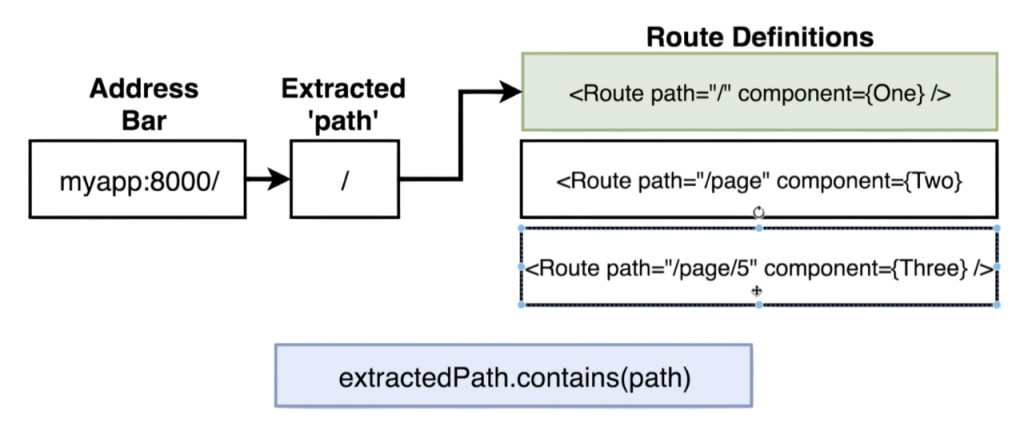
- React Router Basics
- Setting Up React Router in a Project
- Creating Routes in React
- Dynamic Routing in React Router
- Route Parameters and Query Strings
- Navigating Between Routes
- Using useNavigate and useLocation Hooks
- Nested Routes in React Router
- Redirects and 404 Pages
- Lazy Loading Routes for Optimization
- Protected Routes and Authentication
- Best Practices for React Router
React Router Basics
A popular and strong JavaScript package called React Router was created to manage client-side routeing in React apps. It makes it possible to move between views or components of a Single-Page Application (SPA) without having to reload the entire page. React Router improves user experience, boosts performance, and enables developers enrolled in Full Stack Training to create dynamic, responsive, and user-friendly web interfaces by effectively managing routes. It is a crucial tool for creating cutting-edge, scalable front-end apps because of its declarative routeing technique, which blends seamlessly with React’s component-based architecture. To put it simply, React Router is essential to turning a static React project into a fully working SPA that provides a seamless and interesting user experience while preserving code reuse and optimal speed.
Setting Up React Router in a Project
You must install the necessary package and set up routeing in your React application before you can use React Router in your project. You can specify how users move between various elements or pages during the simple setup procedure What is React. React Router is a popular library for handling client-side routing in React applications. It allows you to create single-page applications (SPAs) where navigation between pages doesn’t trigger a full browser reload only the components change.
Installing React RouterDownloading the react-router-dom package is the first step, as it includes the components required for routing. Enter the following command in the root directory of the project:
- # Using npm
- npm install react-router-dom
- # Using yarn
- yarn add react-router-dom
Once installed, you need to wrap your main application component with the BrowserRouter component, which enables routing capabilities throughout your app.
Example setup in index.js or main.jsx:
- import React from “react”;
- import ReactDOM from “react-dom/client”;
- import { BrowserRouter } from “react-router-dom”;
- import App from “./App”;
- const root = ReactDOM.createRoot(document.getElementById(“root”));
- root.render(
- BrowserRouter
- App
- BrowserRouter
- );
Inside your App.js file, you can define routes using the Routes and Route components provided by React Router. Each route corresponds to a specific component or page.
- import React from “react”;
- import { Routes, Route } from “react-router-dom”;
- import Home from “./pages/Home”;
- import About from “./pages/About”;
- import Contact from “./pages/Contact”;
- function App() {
- return (
- Routes
- Route path=”/” element={
} - Route path=”/about” element={
} - Route path=”/contact” element={
} - Routes
- );
- }
- export default App;
Creating Routes in React
Routes in React specify which component should be displayed for a certain URL path. You can design a hierarchical navigation system for your application with React Router that enables users to switch between views or pages without having to reload the entire page.

You may specify which components should be shown for particular URL paths by creating routes in React, which makes it possible for single-page applications (SPAs) to navigate fluidly. You may configure a Routes container with React Router and add several Route components, each of which specifies a path and the element to be rendered. As a React js Developer , you can use this configuration to dynamically display various views or pages without requiring a page reload. You may create interactive and scalable React apps with a well-organized navigation system by merging static and dynamic routes.
Importing Required ComponentsTo create routes, you first need to import the necessary components from react-router-dom:
- import { Routes, Route } from “react-router-dom”;
Within your primary app component, you can establish a basic route:
- import React from “react”;
- import { Routes, Route } from “react-router-dom”;
- import Home from “./pages/Home”;
- import About from “./pages/About”;
- function App() {
- return (
- Routes
- Route path=”/” element={
} -
} - Routes
- );
- }
- export default App;
Defining Route components inside a Routes container which supports both static and dynamic paths is the first step in creating routes in React. React Router enables you to create intricate, scalable, and intuitive single-page applications using nested routes and catch-all routes.
Are You Interested in Learning More About Full Stack Developer? Sign Up For Our Full Stack Developer Training Today!
Dynamic Routing in React Router
React Router enables dynamic routes through URL parameters. You define a route with a parameter using a colon (:) in the path:
- import { Routes, Route } from “react-router-dom”;
- import Product from “./pages/Product”;
- function App() {
- return (
- Routes
- Route path=”/product/:productId” element={
} - Routes
- );
- }
- export default App;
With React Router’s dynamic routing, developers can use layered routes, URL parameters, the React Useeffect Hook and API connections to build adaptable, data-driven applications. This method is essential for creating cutting-edge, scalable, and highly interactive online apps.
Route Parameters and Query Strings
To transport dynamic data across URLs in React Router, query strings and route parameters are crucial components. They enable programmers to design adaptable, data-driven apps that react to input from users or outside data sources.
Route ParametersRoute parameters are dynamic segments of a URL that are defined with a colon (:) in the route path. In more advanced applications, they can be combined with React DND to manage dynamic, drag-and-drop elements tied to specific resources such as user profiles, products, or blog posts.
- import { Routes, Route } from “react-router-dom”;
- import UserProfile from “./pages/UserProfile”;
- function App() {
- return (
- Routes
- Route path=”/user/:userId” element={
} - );
- }
- export default App;
Route parameters and query strings in React Router are key for creating dynamic, data-driven applications. While route parameters define specific resource identifiers, query strings allow flexible filtering and customization, enabling developers to build scalable and interactive Single-Page Applications (SPAs).
Would You Like to Know More About Full Stack Developer? Sign Up For Our Full Stack Developer Training Now!
React Router’s lazy loading routes enhance performance and user experience by optimising your application by loading components only when needed. Code splitting for both regular and nested routes can be implemented with ease by combining React.lazy() with Suspense, guaranteeing that your React application scales effectively.
Protected Routes and Authentication
Certain routes, including dashboards, user profiles, or admin panels, must be limited to authenticated users exclusively in contemporary web applications. Sensitive pages are protected from unwanted access by protected routes. A versatile approach to implementing this feature is offered by React Router.
The idea behind protected routesBefore rendering the targeted component, a protected route verifies if the user is authenticated. The user is usually taken to a login page or an access-denied page if they are not authenticated, while authenticated users can then access features such as a React Carousel or other dynamic UI components.
Creating a Protected Route ComponentYou can create a reusable ProtectedRoute component to wrap any route that requires authentication.
- import { Navigate } from “react-router-dom”;
- function ProtectedRoute({ isAuthenticated, children }) {
- if (!isAuthenticated) {
- return
; // Redirect to login if not authenticated - }
- return children; // Render the protected component if authenticated
- }
- export default ProtectedRoute;
Authentication-based access control may be implemented quickly and easily with React Router’s protected routes. Developers may safeguard their SPAs without sacrificing a seamless user experience by enclosing sensitive components in a ProtectedRoute and redirecting them using the Navigate component. Scalable and sustainable authentication throughout the application is ensured by combining context or state management with protected routes.
Best Practices for React Router
Structure and Organization: Web programs are typically organized using BrowserRouter, which makes use of the HTML5 History API to provide clean URLs. Use HashRouter exclusively for server setups or legacy browser support.Employ Nested Routing: To give your application a logical, hierarchical structure that reflects the UI layout, use nested routes.
User Experience and Navigation: Make Use of Link and NavLink: To avoid full page reloads and take advantage of React Router’s features, such as active styling with NavLink, developers in Full Stack Training should use these components for navigation within your application rather than the more common tags. Put 404 Pages into Practice: By adding a catch-all route (such as *) to the end of your route definitions to display a 404 “Not Found” page, you can handle unknown routes in a gentle manner.
Efficiency and Enhancement: Use Suspense and Lazy Loading: To speed up initial load times, use React.lazy() to dynamically import components and wrap them with Suspense to show a loading indicator as the component loads. Optimize Route Parameters: To develop dynamic and reusable routes, make good use of route parameters. However, to prevent unexpected overrides in the params object, make sure dynamic segments are unique inside a particular path.




